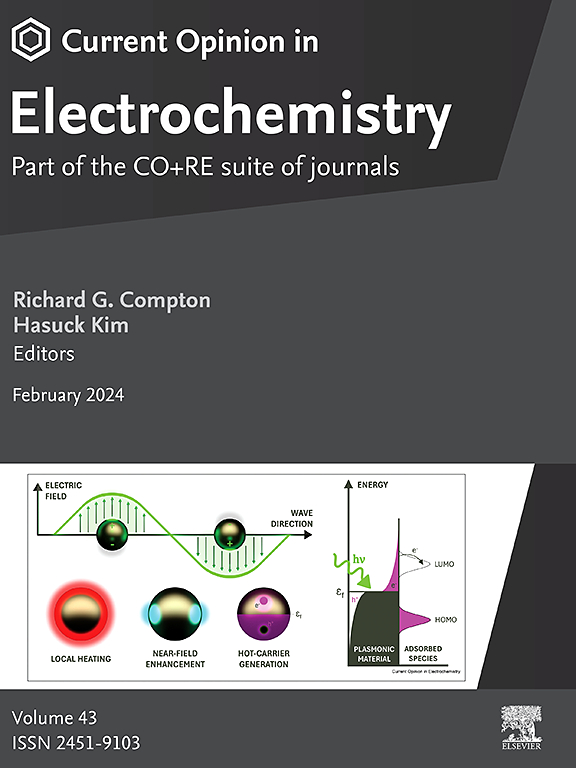Recent advances in Tetraphenylethylene-based aggregation-induced electrochemiluminescence for biosensing applications
IF 6.9
2区 化学
Q1 CHEMISTRY, PHYSICAL
引用次数: 0
Abstract
Tetraphenylethylene (TPE), a prominent aggregation-induced emission (AIE) emitter, has gained significant attention in the development of electrochemiluminescence (ECL) biosensors due to its unique luminescent properties. The combination of AIE and ECL improves the ECL intensity and efficiency, making TPE-based systems ideal for high-sensitivity AIECL biosensing applications. This review discusses recent advances in TPE and its derivatives based small molecular materials (e.g., nanoaggregates, organic dots, silica and vesicles confined TPE-based materials) and polymers (e.g., polymer dots, metal–organic frameworks and covalent organic frameworks) for biological applications. The AIECL principles of TPE-based materials are explored, which are mainly through molecular aggregation, spatial confinement and rigid structure to restrict the motions of TPE and reduce non-radiative transitions to realize high ECL emission. Finally, current challenges are addressed, along with perspectives on future directions to improve the performance and expand the applicability of TPE-based AIECL platforms in bioanalysis.

四苯乙烯基聚集诱导电化学发光生物传感研究进展
四苯基乙烯(TPE)是一种突出的聚集诱导发射(AIE)发射体,由于其独特的发光特性,在电化学发光(ECL)生物传感器的开发中受到了广泛的关注。AIE和ECL的结合提高了ECL的强度和效率,使基于tpe的系统成为高灵敏度AIECL生物传感应用的理想选择。本文综述了基于TPE及其衍生物的小分子材料(如纳米聚集体、有机点、二氧化硅和囊泡限制TPE基材料)和聚合物(如聚合物点、金属有机框架和共价有机框架)在生物应用方面的最新进展。探讨了TPE基材料的AIECL原理,主要是通过分子聚集、空间约束和刚性结构来限制TPE的运动,减少非辐射跃迁,实现高ECL发射。最后,解决了当前的挑战,以及对未来方向的展望,以提高性能和扩大基于tpe的AIECL平台在生物分析中的适用性。
本文章由计算机程序翻译,如有差异,请以英文原文为准。
求助全文
约1分钟内获得全文
求助全文
来源期刊

Current Opinion in Electrochemistry
Chemistry-Analytical Chemistry
CiteScore
14.00
自引率
5.90%
发文量
272
审稿时长
73 days
期刊介绍:
The development of the Current Opinion journals stemmed from the acknowledgment of the growing challenge for specialists to stay abreast of the expanding volume of information within their field. In Current Opinion in Electrochemistry, they help the reader by providing in a systematic manner:
1.The views of experts on current advances in electrochemistry in a clear and readable form.
2.Evaluations of the most interesting papers, annotated by experts, from the great wealth of original publications.
In the realm of electrochemistry, the subject is divided into 12 themed sections, with each section undergoing an annual review cycle:
• Bioelectrochemistry • Electrocatalysis • Electrochemical Materials and Engineering • Energy Storage: Batteries and Supercapacitors • Energy Transformation • Environmental Electrochemistry • Fundamental & Theoretical Electrochemistry • Innovative Methods in Electrochemistry • Organic & Molecular Electrochemistry • Physical & Nano-Electrochemistry • Sensors & Bio-sensors •
 求助内容:
求助内容: 应助结果提醒方式:
应助结果提醒方式:


